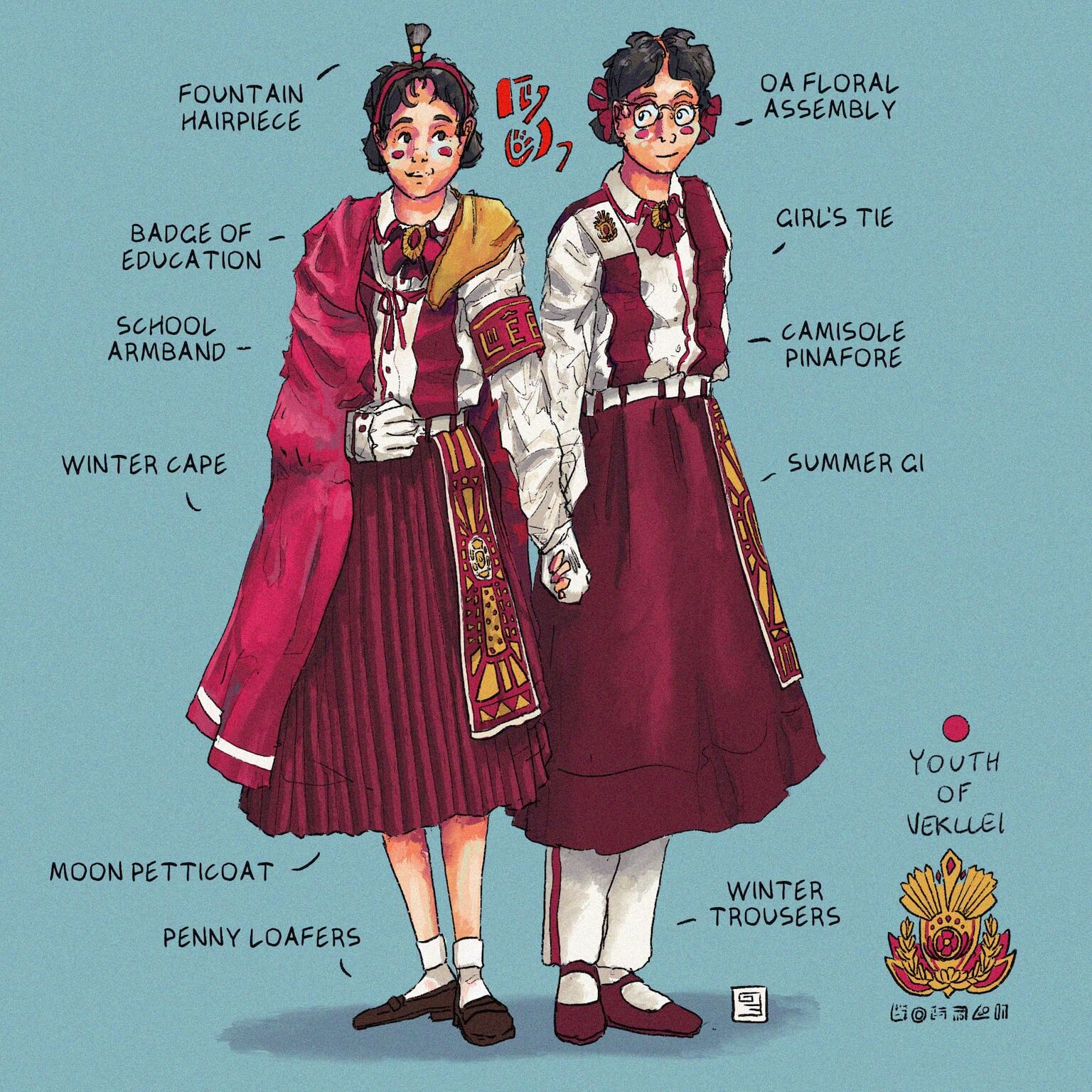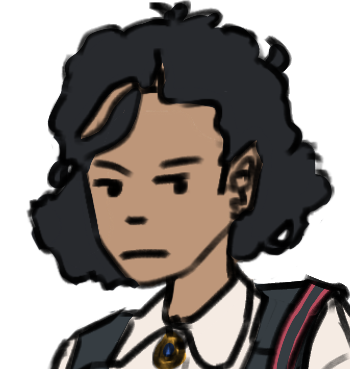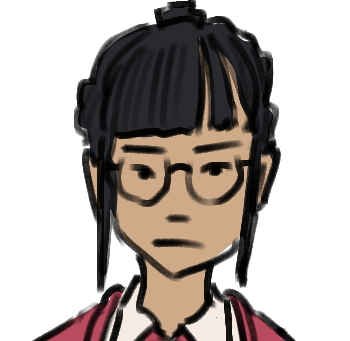NEW Story: Cocktail
Uniform Ideology in the Arctic North

This article is not part of Vekllei canon. It may be old, obsolete or just a bit of fun.
Hello everyone. In celebration of the approach of exams (at least in the Southern Hemisphere), we turn our gaze north to Vekllei to celebrate Study Week. Every other day we’ll be looking at education in Vekllei, and today we’re looking at uniforms.
Life in Vekllei is filled with uniforms for work and in study, for a various historical and cultural reasons. In the late 21st century, in a society where work is social, they help distinguish and professionalise employment, which grants important psychological and social benefits. Where a uniform might be employed for economic reasons in a country of poverty, or as a form of social control in schools, in Vekllei they are identifiers and champions of labour in a workplace or school.
For the students of Vekllei, a single uniform is distributed across all ages of schooling, from preschool right through university and miscellaneous higher education. For girls, it is highly modular and incorporates important cultural items of clothing, like the gi quarter-pleat, temple and fountain hairpieces, and overskirt lace aprons called sun petticoats (in ceremony). Although Vekllei was once cold year-round, today it sees warm summers and mild winters that encourage distinct summer and winter fashions. A girl’s preference in uniforms may cycle through many styles over her schooling years, from spartan minimalism in high school (of just an armband, white shirt and red skirt) to decadent ceremony in her university years.
In Vekllei Semaphore, the language of colour and shape, red and white imply both youth and energy (as well as sweetness, determinedness and purity depending on the context), and are often recognised as the national colours. In youth, it distinguishes education from traditional labour (in the literal, physical sense), which is communicated with navy blue.
High-quality uniforms are a marker of national pride, as indicators of national wealth after the shameful poverty of the First Atomic War’s fallout. To the people of Vekllei, an intricate and expensive uniform distributed amongst ordinary people greatly influences the national ego, and further contributes to Vekllei’s social and cultural isolation from the rest of the Western Hemisphere.
Tomorrow, we’ll be seeing how the boys compare. Then things will get a little more exciting. Please let me know if you have any questions!

